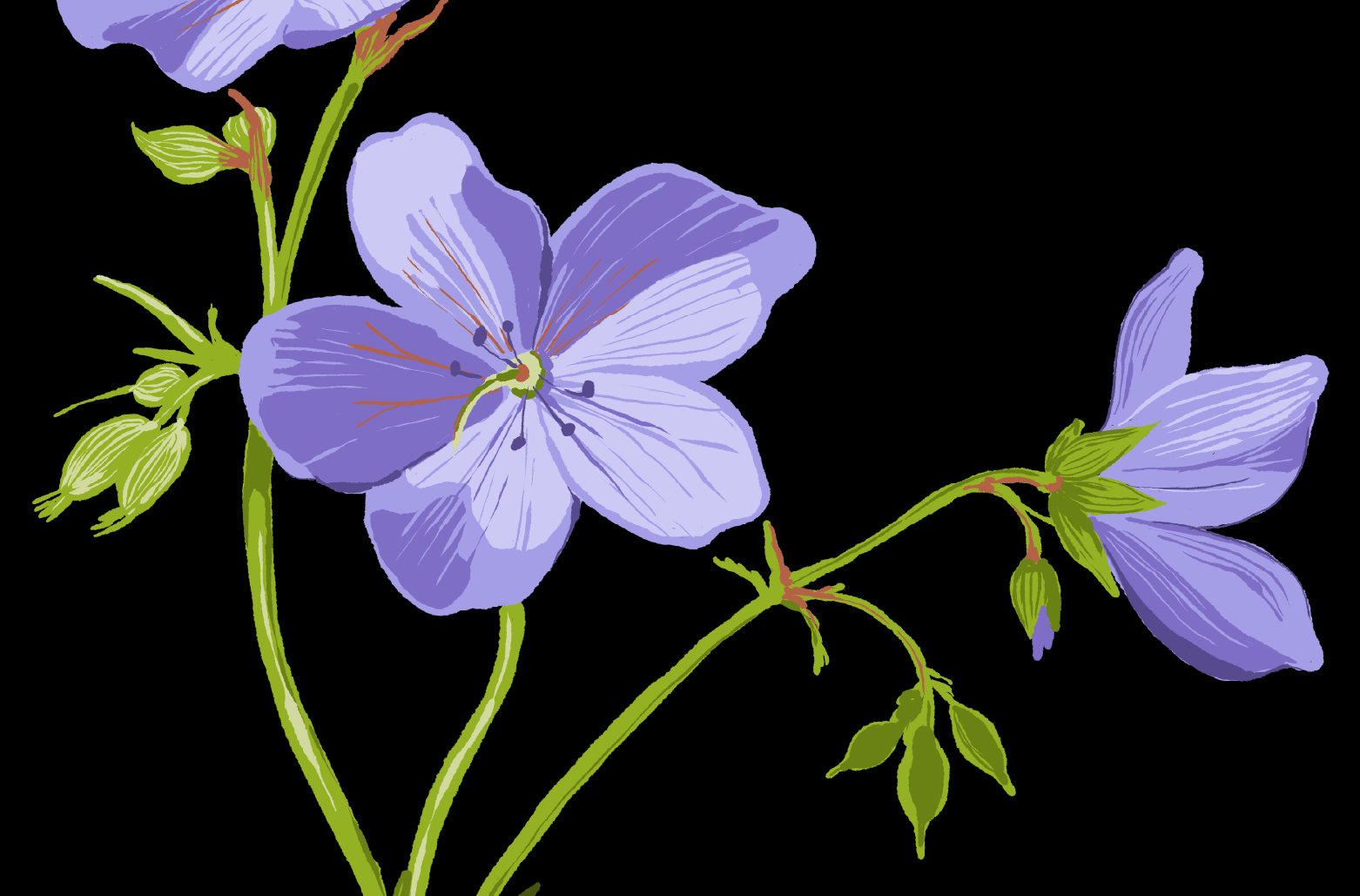The Lapland War and traces of the German troops can still be seen in the landscape around us as wartime neophytes, also called polemochores. These plants can still be found near German campsites and structures, for example in the areas of Kalkkimaa and Kaakamo in Tornio.
Veterinary center Armee-Pferdepark 462 in Hirsikankaanmäki in Kaakamo 1946.
Geodata portal Paikkatietoikkuna, National Land Survey of Finland.
Ship- and trainloads of feed were transported for the animals belonging to the troops, such as donkeys and horses, and among these loads were seeds of plants from Central Europe. These seeds spread plants especially along railways, and for example in the area of the animal hospital in Kaakamonkylä.
Even though most of these newcomers were crowded out by local plants, some of them prospered in their new environment.Some of the wartime neophytes may have been in the area earlier, but some have arrived specifically with the loads of animal feed.
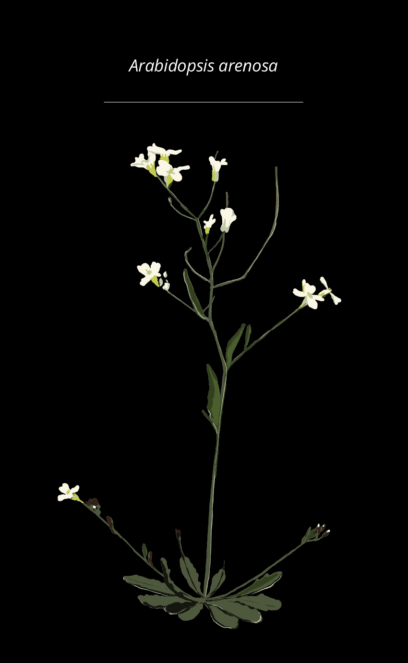
Of these neophytes, the sand rock-cress (Arabidopsis arenosa, earlier Cardaminopsis arenosa) is the most successful. These white flowers can be seen early in the start of summer, especially along railroad tracks. The sand rock-cress is also a ballast plant, which means that strains have arrived in Tornio and Oulu on ships, before the German animal feed loads.
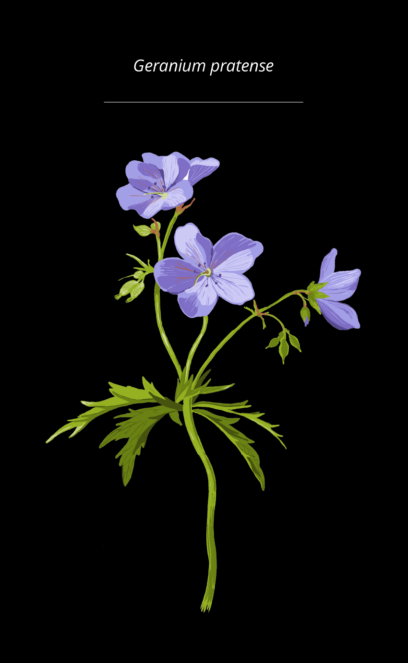
A familiar plant, the meadow cranesbill or meadow geranium (Geranium pratense), albeit easy to mix up with the wood cranesbill or woodland geranium, is also a wartime neophyte that came to Northern Finland with the German military.
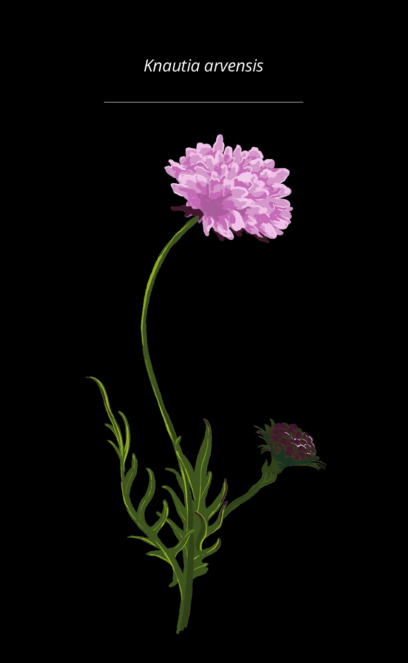
The field scabious (Knautia arvensis) is an archaeophyte spread by slash-and-burn agriculture, and a popular plant in traditional gardens, but in some locations it is a polemochore.
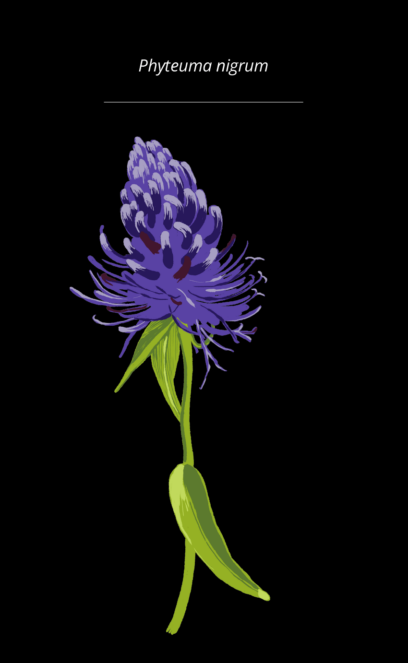
The black rampion (Phyteuma nigrum) can be found in Hirsikankaanmäki. Even though its occurrences are rare, its exceptional appearance makes it easy to spot.
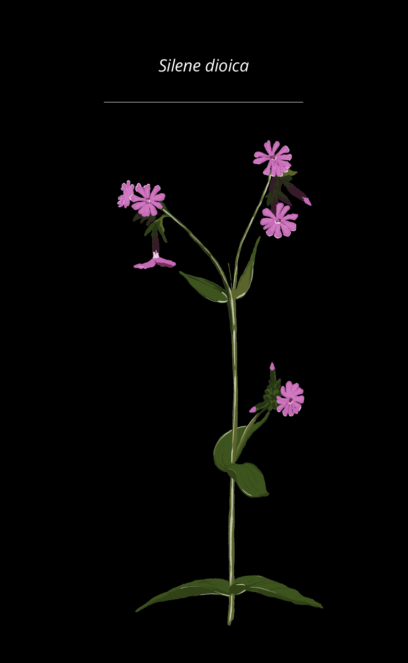
A familiar flower, red campion or red catchfly (Silene dioica) has in the past moved from coastal groves inland with the help of hay growing, but people have also included it in traditional gardens. Here and there, some strains of red campion are also polemochores.
Exhibition production
Texts: Annemari Tranberg
Illustrations: Miila Kankaanranta / Lapin Kansa
